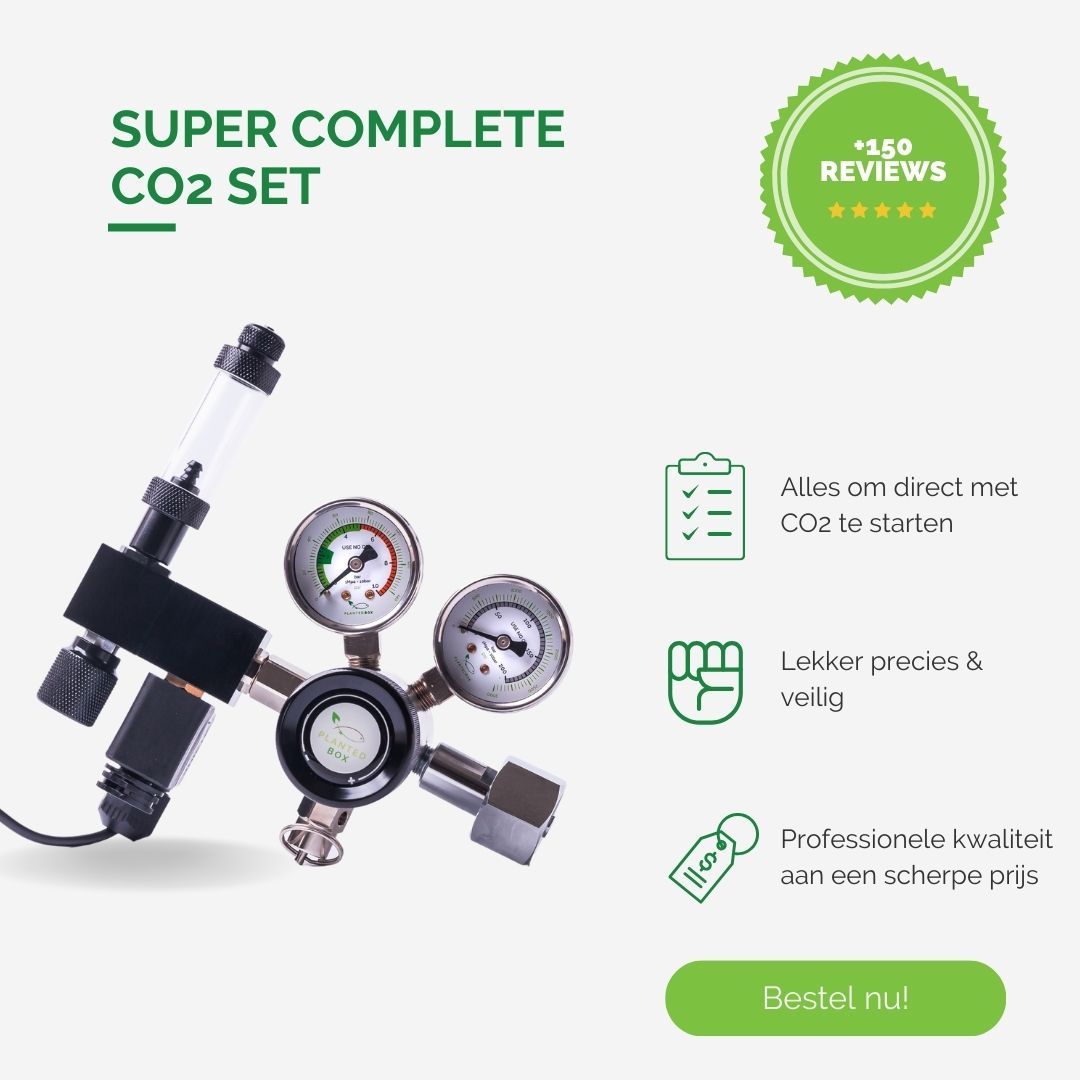Did you know CO2 is one of the most important nutrients for your plants? In fact, 40 to 45 percent of the “dry weight” of all plants in the world is made up of carbon. In other words: without carbon, your plants would simply die.
There’s always some natural CO2 in your aquarium, produced by bacteria or fish breathing. But often that’s not enough for a tank with lots of plants and moderate to strong lighting. That’s why I personally think investing in a good CO2 aquarium setup is a must for any planted tank.
Have you decided to switch to CO2 and invest in a CO2 aquarium setup to provide carbon for your plants? Great, excellent decision! But watch out: CO2 can be lethal to your fish. Below are my tips on how to setup a CO2 system in an aquarium without putting your fish in danger.
Tips for a safe CO2 aquarium setup
Tip 1: cheap can be expensive
Scoring a cheap CO2 setup for aquarium may sound great, but keep in mind that CO2 is under very high pressure. Cheap options (often from China) usually save money on internal parts. Cheap components and high pressure are a bad combination. It’s better to save up and invest in a quality CO2 aquarium setup—it will save you a lot of headaches. What components should be in a complete CO2 setup for aquarium?
- A CO2 regulator
- A CO2 cylinder
- A solenoid valve (either standalone or built into the regulator)
- A diffuser, atomizer, or reactor to mix the CO2 bubbles into the water
Optionally, you can install a drop checker to easily measure CO2 levels. Also, pay attention to the quality of the needle valve, which is the part used to set the number of bubbles per second. In cheap regulators, this part is often… garbage. As a result, you can’t properly adjust your CO2, making the whole CO2 aquarium setup nearly useless. Proper tuning is crucial!
Tip 2: always follow the instructions
If you’ve chosen a PlantedBox CO2 aquarium setup, you’ll get a handy quick-start guide explaining how to setup your CO2 system in your aquarium. If you have another product, you can follow these steps:
- Securely connect the CO2 regulator to the CO2 cylinder, e.g., with a wrench
- Open the CO2 cylinder and check for leaks at the main connection
- Set the main pressure on your regulator to 2 bar
- Turn on the solenoid valve (power on) and adjust the needle valve to about 1 bubble per second for a 100L tank
- Optionally, connect the solenoid valve to a timer (so you don’t have to unplug it daily).
The CO2 will now slowly flow through the CO2 tubing towards the atomizer, diffuser, or reactor. Once enough pressure builds up, CO2 will be pushed through the membrane of the diffuser or atomizer, forming small bubbles. With a CO2 reactor, there’s no membrane, so it works immediately. Pro tip: turn the solenoid valve on about 1 hour before the lights go on and turn it off 1 hour before they go out. This way, CO2 is well-dissolved in the water, allowing your plants to fully absorb it when photosynthesis starts.
Your CO2 aquarium setup should look like this:

Tip 3: regularly check your fish
Adding CO2 doesn’t end with setting up your system. Once your CO2 aquarium setup is running and you see small bubbles throughout the tank, it’s crucial to monitor your fish and shrimp closely—especially during the first few days!
If you notice your fish gasping for air, hiding, or swimming frantically, your CO2 levels are likely too high. Lower the bubble count immediately. Check your fish and shrimp multiple times a day at regular intervals and adjust as needed.
Tip 4: replace your CO2 cylinder on time and keep a spare
Is your cylinder empty? Replace it immediately, as a CO2 shortage can lead to algae growth. Always keep a spare cylinder on hand so you can swap it while refilling the other. I recommend using a 2kg CO2 cylinder as your main supply and a 500g backup cylinder. While the 2kg is being refilled, use the 500g one, and vice versa. Super convenient and it saves you from “algae nightmares”!

Extra Tip: Never remove your regulator from the cylinder and leave it unused for a long time. Without pressure in the system, aquarium water can flow back through the CO2 tubing into the regulator—and into your living room!
Conclusion on how to setup a CO2 system in an aquarium
Invest in a good CO2 aquarium setup with the right components—cheap usually ends up being expensive in the long run. Once you’ve got your setup, follow the instructions carefully and set the bubble count correctly. When you can afford it, consider investing in an extra CO2 cylinder. And remember to regularly monitor your fish, especially after making adjustments!









